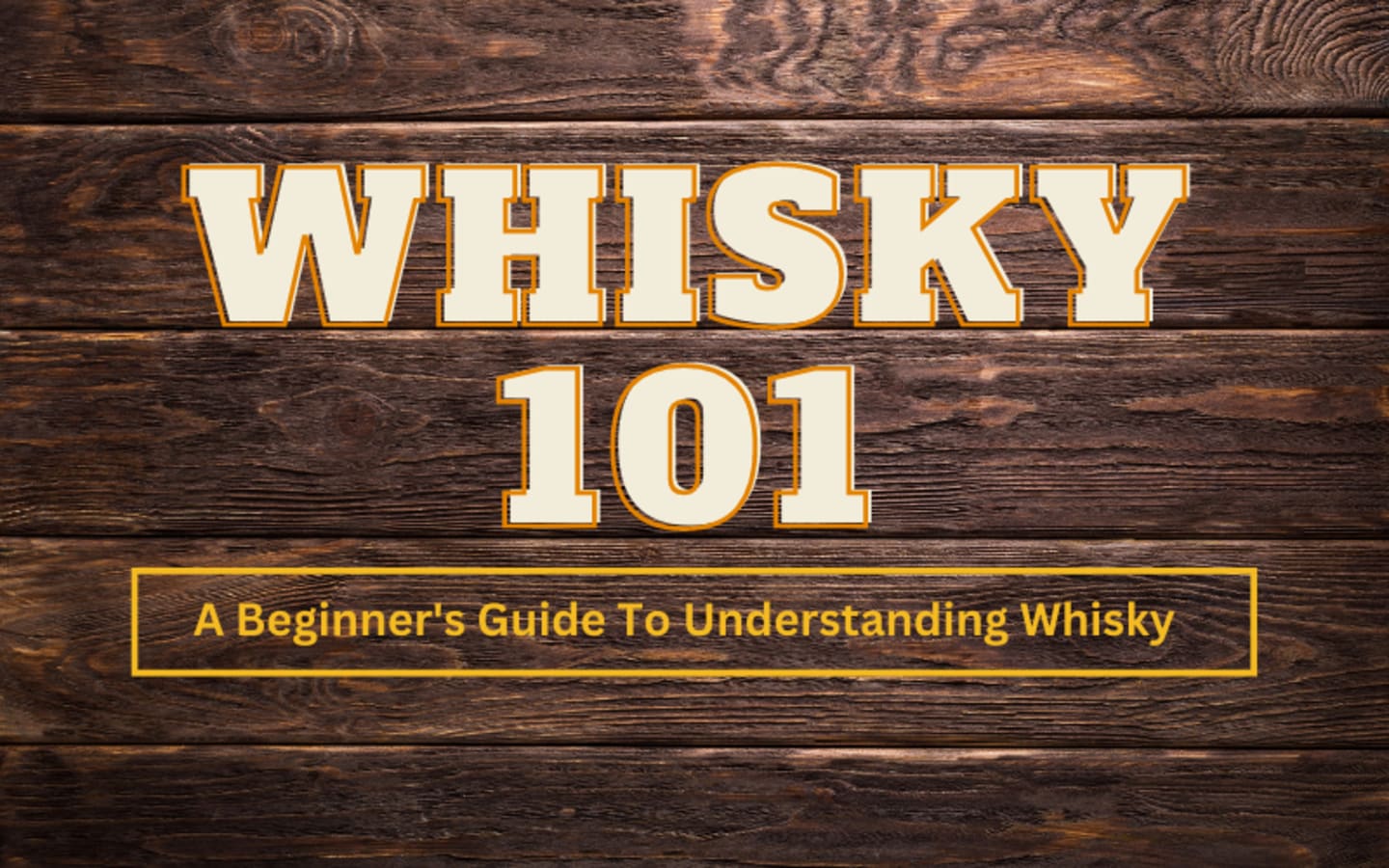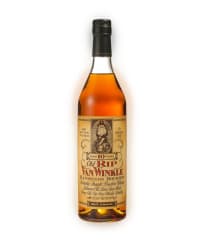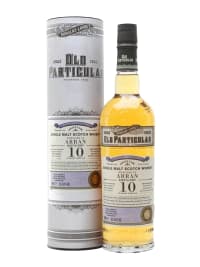What is Whisky?
Whisky is an alcoholic beverage made from grain, usually barley, corn, or rye. The grains are typically malted, meaning they are soaked in water and allowed to germinate, and then they are dried using a heat source, such as peat, coal, or wood. The dried grain is then ground into a powder, mixed with water and yeast, and allowed to ferment. The resulting liquid is then distilled, which separates the alcohol from the other components of the liquid. After distillation, the whisky is aged in oak barrels for a period of time, which can range from a few years to several decades. There are many different types of whisky which are made using different methods and ingredients and have their own unique flavors and characteristics.
Here are the main types of whisky:
- Scotch whisky: Made in Scotland from malted barley, water, and yeast. It must be aged in oak casks for at least three years.
- Irish whiskey: Made in Ireland from a mash of malted and unmalted barley, and sometimes other grains. It must be aged in oak casks for at least three years.
- Bourbon: Made in the United States from a mash of at least 51% corn, with the remainder being wheat, rye, or barley. It must be aged in new, charred oak barrels for at least two years.
- Canadian whisky: Made in Canada from a mixture of grains, including corn, rye, wheat, and barley. It must be aged in oak barrels for at least three years.
- Japanese whisky: Made in Japan using techniques similar to those used to make Scotch whisky. It is often made from barley and other grains, and is aged in oak barrels.
Whisky can be enjoyed neat, on the rocks (with ice), or in cocktails. It is known for its rich, complex flavor, which can vary depending on the type of whisky and how it is made. Some common flavors found in whisky include vanilla, caramel, toffee, oak, and smoke.
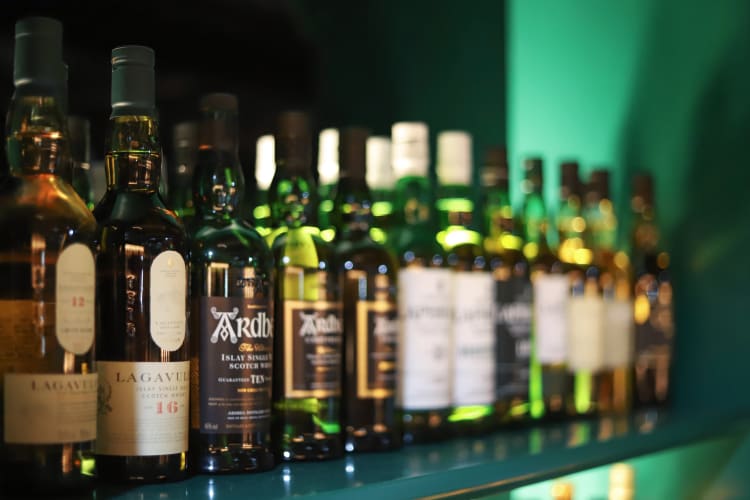
Whisky History
The origins of whisky can be traced back to ancient civilizations, where people fermented and distilled various grains and other crops to create spirits.
The production of whisky as we know it today is believed to have originated in the medieval monasteries of Ireland and Scotland, where monks used the beverage as a means of preserving surplus grains. By the 14th century, the production of whisky had spread to the Scottish Highlands, where it became an important part of the local economy.
In the 16th and 17th centuries, whisky production spread to other parts of Scotland and Ireland, and the drink became more widely available. By the 18th century, whisky was being exported to other countries, including the United States.
In the 19th and 20th centuries, whisky production continued to grow and expand, and today it is a global industry, with distilleries producing a wide range of styles and types of whisky in countries all around the world.
Whisky VS Whiskey
Whisky and whiskey are two different spellings for the same type of spirit, which is a type of alcoholic beverage made from grains that have been distilled and aged in oak barrels. The main difference between the two spellings is the region where the spirit is produced.
Whisky is the spelling used for spirits produced in Scotland, Canada, and Japan, while whiskey is the spelling used for spirits produced in Ireland and the United States. Both whisky and whiskey can be made with a variety of grains, including barley, corn, rye, and wheat.
Despite the spelling difference, whisky and whiskey are both enjoyed around the world and have a rich cultural history. They are often enjoyed neat or on the rocks, but can also be used in cocktails.
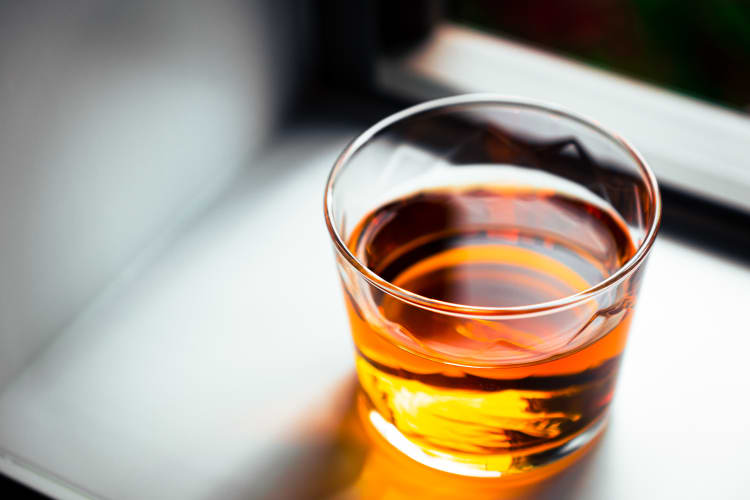
What influences the flavour of whisky?
There are several factors that can influence the flavor of whisky, including the type of grain used, the distillation process, the type of oak barrels used for aging, and the length of time the whisky is aged.
The type of grain used to make whisky is one of the most significant factors that influences its flavor. The most common grain used to make whisky is malted barley, but other grains such as corn, rye, and wheat are also commonly used. Each type of grain imparts its own unique flavors to the whisky, and the proportion of each grain used in the mixture can also have an impact on the final flavor.
The distillation process is another factor that can influence the flavor of whisky. Different distillation techniques, such as the use of different types of stills and the length of the distillation process, can result in different flavors in the final product.
The type of oak barrels used to age the whisky can also have a significant impact on its flavor. Different types of oak, as well as the level of charring on the barrels, can impart different flavors to the whisky. In addition, barrels that have previously been used to age other types of alcohol, such as sherry or port, can also contribute additional flavors to the whisky.
Finally, the length of time that the whisky is aged can also influence its flavor. As the whisky ages, it absorbs flavors from the oak barrels and takes on a deeper, more complex flavor profile.
How is Whisky Made?
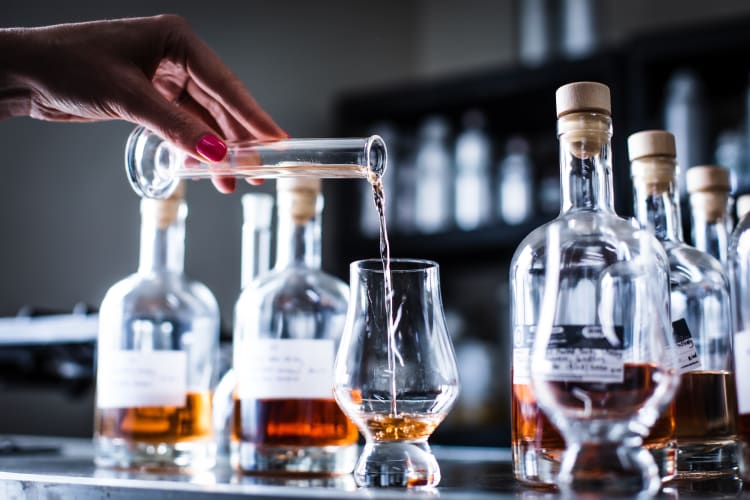
Let's take a closer look at the production methods of some of the most popular whiskies in the world.
Scotch Whisky
Scotch whisky is a type of whisky that is produced in Scotland, according to a set of strict production regulations. The process of making scotch whisky involves several steps:
- Malting: The first step in the production of scotch whisky is the malting of barley. This involves soaking the barley in water to stimulate germination, and then drying it using hot air. This process converts the starch in the barley into sugars, which will be fermented to produce alcohol later in the process.
- Mashing: After the barley has been malted, it is ground into a coarse flour called "grist." The grist is mixed with hot water in a large vessel called a "mash tun," to create a sweet liquid called "wort." During this process, enzymes in the malt convert the sugars in the grist into fermentable sugars, which will be used to produce alcohol during fermentation.
- Fermentation: The wort is transferred to large tanks called "washbacks," where it is mixed with yeast to begin the fermentation process. Fermentation converts the sugars in the wort into alcohol and carbon dioxide. This process takes several days to complete.
- Distillation: The fermented liquid, called "wash," is then distilled in large copper stills to produce a clear, high-alcohol liquid called "new make spirit." The distillation process separates the alcohol from the other compounds in the wash, resulting in a concentrated form of the original liquid.
- Aging: The new make spirit is then aged in oak barrels for at least three years. During this time, the spirit takes on the flavors and aromas of the oak, as well as other compounds from the wood. The length of aging can vary, with some whiskies being aged for several decades.
- Blending and Bottling: Once the whisky has been aged to the desired level, it is often blended with other whiskies to create a consistent flavor profile. The blended whisky is then bottled and sold.
There are many variables that can affect the final flavor of a scotch whisky, including the type of barley used, the water source, the type of yeast, the type of oak barrels used for aging, and the length of aging. These factors all contribute to the unique character of each individual scotch whisky.
American Whiskey
Bourbon is a type of American whiskey that is made from a mixture of grains, including at least 51% corn. It is named after Bourbon County, Kentucky, which was an important center of whiskey production in the early 19th century. To be legally classified as bourbon, the whiskey must be aged in new, charred oak barrels for at least two years. The aging process gives bourbon its characteristic amber color and flavors of oak and vanilla.
Bourbon is produced in a similar manner to other types of whiskey, with the grains being ground into a powder, mixed with water and yeast, and allowed to ferment. The resulting liquid is then distilled and aged in oak barrels. After aging, the bourbon is typically bottled and sold.
There are several different styles of bourbon, including straight bourbon, which must be aged for at least two years, and blended bourbon, which is a mixture of straight bourbon and other types of whiskey. Bourbon can be enjoyed on its own or as a component of cocktails, such as the classic Old Fashioned or the Manhattan.
To make bourbon, the following steps are typically followed:
- Grains: The first step in making bourbon is to select the grains that will be used. At least 51% of the grain mixture must be corn, while the other grains may include barley, rye, and wheat. The grains are ground into a powder and mixed together in the desired proportions.
- Mashing: The ground grain mixture is then mixed with water to create a mixture called the "mash." The mash is allowed to rest for a period of time to allow the enzymes in the grains to convert the starches into sugars.
- Fermentation: After the resting period, the mash is transferred to a fermentation tank, where it is mixed with yeast. The yeast consumes the sugars in the mash and converts them into alcohol, creating a liquid called the "wash."
- Distillation: The wash is then distilled to separate the alcohol from the other components of the liquid. This is typically done in a still, which is a large, insulated pot with a long, narrow neck. As the wash is heated, the alcohol vaporizes and rises up the neck of the still. The vapor is then cooled and condensed back into a liquid, which is collected in a separate container.
- Aging: The distilled liquid, which is now called "white dog" or "white whiskey," is transferred to oak barrels for aging. The barrels must be new and charred on the inside, which gives the bourbon its characteristic amber color and flavors of oak and vanilla. The bourbon is aged for at least two years, although some bourbons are aged for much longer.
- Bottling: Once the bourbon has reached the desired age, it is bottled and sold. Some bourbons are bottled at full strength, while others are diluted with water to reduce the alcohol content.
Irish Whiskey
Irish whiskey is a type of whiskey that is produced in Ireland. It is made from a mixture of grains, which may include barley, corn, oats, and rye. The grains are typically ground into a powder, mixed with water and yeast, and allowed to ferment. The resulting liquid is then distilled to separate the alcohol from the other components of the liquid.
Irish whiskey is typically aged in oak barrels for a period of time, which can range from a few years to several decades. The aging process gives Irish whiskey its characteristic amber color and flavors of oak and vanilla.
There are several different styles of Irish whiskey, including single malt, single grain, and blended whiskey. Single malt Irish whiskey is made from 100% malted barley and is produced at a single distillery. Single grain Irish whiskey is made from a single grain, such as corn or wheat, and may be produced at multiple distilleries. Blended Irish whiskey is a mixture of single malt and single grain whiskeys from different distilleries.
Irish whiskey is known for its smooth, mellow flavor and is often enjoyed on its own or as a component of cocktails. Some famous brands of Irish whiskey include Jameson, Bushmills, and Tullamore Dew.
To make Irish whiskey, the following steps are typically followed:
- Grains: The first step in making Irish whiskey is to select the grains that will be used. These may include barley, corn, oats, and rye. The grains are ground into a powder and mixed together in the desired proportions.
- Mashing: The ground grain mixture is then mixed with water to create a mixture called the "mash." The mash is allowed to rest for a period of time to allow the enzymes in the grains to convert the starches into sugars.
- Fermentation: After the resting period, the mash is transferred to a fermentation tank, where it is mixed with yeast. The yeast consumes the sugars in the mash and converts them into alcohol, creating a liquid called the "wash."
- Distillation: The wash is then distilled to separate the alcohol from the other components of the liquid. This is typically done in a still, which is a large, insulated pot with a long, narrow neck. As the wash is heated, the alcohol vaporizes and rises up the neck of the still. The vapor is then cooled and condensed back into a liquid, which is collected in a separate container.
- Aging: The distilled liquid, which is now called "white dog" or "white whiskey," is transferred to oak barrels for aging. The barrels must be new and charred on the inside, which gives the Irish whiskey its characteristic amber color and flavors of oak and vanilla. The Irish whiskey is aged for a period of time, which can range from a few years to several decades.
- Bottling: Once the Irish whiskey has reached the desired age, it is bottled and sold. Some Irish whiskeys are bottled at full strength, while others are diluted with water to reduce the alcohol content
Whisky Barrels
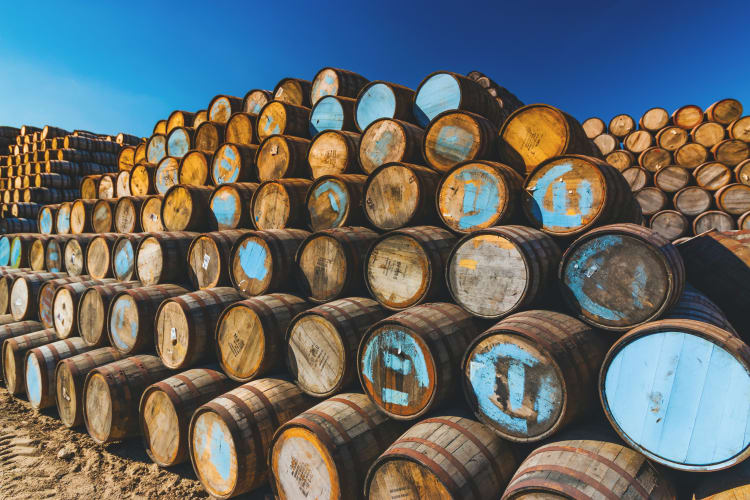
Now that we understand how whisky is produced let's take a look at some of the finer points of whisky maturation, more specifically the barrels whisky is matured in. There are several different types of casks that are commonly used in the production and aging of whisky, including:
- Bourbon barrels: These barrels are made from American white oak and are typically used to age bourbon. They are charred on the inside, which gives the bourbon its distinctive flavor and amber color.
- Sherry barrels: These barrels are made from European oak and have previously been used to age sherry. They are often used to age whisky, and can contribute flavors of fruit, nuts, and spice to the final product.
- Port barrels: These barrels are made from European oak and have previously been used to age port. They are often used to age whisky, and can contribute flavors of fruit and sweetness to the final product.
- Rum barrels: These barrels are made from American oak and have previously been used to age rum. They are often used to age whisky, and can contribute flavors of tropical fruit and spices to the final product.
- Quercus alba barrels: These barrels are made from American white oak and are typically used to age whisky. They can contribute flavors of vanilla, coconut, and spice to the final product.
In addition there is still some additional information and terminology about whisky barrels that is important to cover.
First-fill: First-fill refers to a whisky barrel that has been used to age whisky for the first time. First-fill barrels are typically made from oak and have been charred on the inside to give the whisky a distinctive flavor and amber color.
First-fill barrels are often used to age whisky because they are able to impart more flavor to the whisky than barrels that have been used previously. This is because the wood of the barrel has not yet been fully saturated with whisky, and so the whisky is able to extract more flavors from the wood.
The length of time that a whisky is aged in a first-fill barrel can vary, but it is typically aged for at least three years in order to be classified as whisky. The specific flavors imparted by the barrel will depend on the type of oak used and the level of charring on the inside of the barrel.
Single cask: Single cask whisky refers to whisky that has been aged in a single, individual barrel, as opposed to being blended with whisky from multiple barrels. Single cask whisky is often bottled at its natural cask strength, which means that it has not been diluted with water before bottling and will have a higher alcohol content than whisky that has been diluted.
Single cask whisky is typically produced in small batches and is often considered to be a more premium product due to the unique characteristics and flavors imparted by the individual barrel. The flavor of single cask whisky can vary significantly from one barrel to another, even if they are produced at the same distillery and aged for the same length of time.
Single cask whisky is often bottled and sold as a limited edition expression, and it can be difficult to find as it is produced in such small quantities. It is often sought after by collectors and connoisseurs due to its unique flavor profile and rarity.
Cask strength: Cask strength refers to whisky that has not been diluted with water before bottling and is bottled at the strength at which it comes out of the cask. Cask strength whisky is typically bottled at a higher alcohol by volume (ABV) than standard whisky, which can range from around 50% to over 60% ABV.
Cask strength whisky is often considered to be a more premium product because it has not been diluted and retains all of the flavors and aromas imparted by the cask. It is often bottled as a limited edition expression and is sought after by collectors and connoisseurs due to its unique flavor profile and higher alcohol content.
Because cask strength whisky has a higher alcohol content, it is often recommended to be served diluted with water to bring out the flavors and aromas. The specific amount of water to be added will depend on personal preference and the specific characteristics of the whisky.
There are several different methods of reusing oak barrels to age whisky, including:
Finishing: This method involves aging the whisky in a barrel that has previously been used to age another type of alcohol, such as sherry or port. The whisky absorbs flavors from the barrel, which gives it additional complexity and depth.
Refreshing: This method involves rejuvenating the barrel by toasting or charring the inside of the barrel. This helps to refresh the flavors imparted by the barrel and can give the whisky a more complex flavor profile.
Double-barreling: This method involves aging the whisky in one barrel and then transferring it to a second barrel for further aging. This can help to further refine the flavors of the whisky and add additional depth and complexity.
Solera aging: This method involves aging the whisky in a series of barrels, with the oldest barrels at the bottom and the newest barrels at the top. As the whisky ages, it is transferred from one barrel to another, with some of the older whisky being blended in with the younger whisky. This method can result in a more consistent flavor profile, as the blend of different ages of whisky helps to balance out any variations in flavor.
Whisky Tasting

Here are some tips for tasting whisky:
- Start with a small glass: A smaller glass will allow you to concentrate the aromas and flavors of the whisky, and will make it easier to swirl and examine the whisky.
- Look at the color: Hold the glass up to the light to examine the color of the whisky. The color can provide some clues about the age and type of barrels used to age the whisky.
- Swirl the whisky: Swirl the whisky in the glass to release the aromas. Take a few deep sniffs to get a sense of the whisky's bouquet.
- Take a small sip: Take a small sip of the whisky and hold it in your mouth for a moment to allow the flavors to develop. Swirl the whisky around in your mouth to coat your tongue and taste buds.
- Examine the finish: The finish of the whisky is the way it tastes and feels after you swallow it. Take a moment to think about the flavors and textures that linger in your mouth after you swallow the whisky.
- Add a little water: Adding a small amount of water to the whisky can help to open up the flavors and release more of the aromas. Start with a small amount of water and add more to taste.
Beginner Whisky Recommendations
If you are a beginner to scotch whisky, here are a few recommendations for good entry-level scotch whiskies:
- Glenfiddich 12 Year Old: This is a well-balanced single malt whisky that is aged for 12 years in oak barrels. It has a smooth, fruity flavor profile with notes of pear, honey, and oak.
- Glenmorangie 10 Year Old - The Original: This is a smooth, easy-drinking single malt whisky that is aged for at least 10 years in oak barrels. It has a light, fruity flavor with notes of vanilla and citrus.
- The Glenlivet 12 Year Old: This is a classic single malt whisky that is aged for 12 years in oak barrels. It has a smooth, well-balanced flavor with notes of vanilla, toffee, and fruit.
- Dalwhinnie 15 Year Old: This is a single malt whisky that is aged for 15 years in oak barrels. It has a smooth, rich flavor with notes of honey, heather, and spice.
Explore more whisky deals and prices here.
The world of whisky is vast and ever expanding. This article is just the tip of the iceberg of the wealth of whisky information and is only intended to help you on your journey to fully understanding whisky and its origins. To continue learning more about whisky visit the full CasKompare blog.
